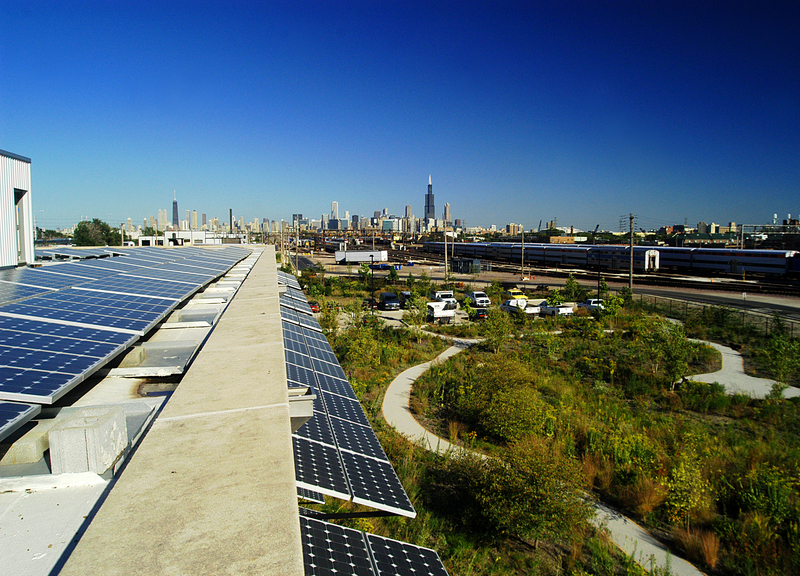Code Green Solutions


Green bonds focus on financing future investments – such as greener buildings or renewable energy projects – that produce attractive financial risk/reward scenarios, reduce greenhouse gases, and/or provide other positive environmental benefits. Most importantly, green bonds are getting traction with big financial institutions and institutional investors, those that control the majority of capital investment. With just $3 billion of green bonds issued in 2012, forecasts call for $100 billion to be issued in 2015. If we look beyond green bonds to include unlabeled bonds that finance efforts to combat climate change estimates suggest roughly $500 billion, up from $346 billion last year, focused on these kinds of projects.
While green bonds may seem like a cutting edge innovation, the practice of using themed bonds for issues of national or global importance is not new. Look back in history and you’ll find railway bonds from the 19th century, war bonds of the early 20th century, and highway bonds about fifty years ago. For a sense of scale, consider that 85 million Americans spent over $185 billion ($2 trillion in today’s dollars) to purchase bonds after WWII and fund this country’s infrastructure.
Perhaps one challenge in repeating this success with green bonds is convincing people that issues such as resource efficiency, climate change, and health/wellness are indeed important issues. After all, a lofty goal of green bonds is to catalyze needed financing for low carbon technologies and projects that can keep the global temperature rise below the 2 degrees Celsius recommended by the Intergovernmental Panel on Climate Change. Estimates to achieve this target call for at least $50 trillion of new investments in energy supply and energy efficiency between now and 2035. Estimates indicate that we have 5-10 years to decrease the odds of hitting climate change tipping points, and that low-carbon industries need to grow 25% per year compounded. That’s a big hill to climb, but looking at the global consensus of climate scientists, what choice do we have?
Why do investors care about green bonds?
Investors are motivated for many reasons: (1) brand and bragging rights, (2) diversification, and (3) risk mitigation (an estimated 55% of institutional pension fund investments are exposed to climate risks), (4) favorable assessment of the investment’s risk/return profile, and (5) the ability to impact targeted issues.
With an $80 trillion global bond market, there is a great deal of room for growth of this new investment vehicle, especially since these bonds typically present the same risks and returns as normal bonds, but allow investors to focus on an issue of concern to their stakeholders. In addition, given that today’s interest rates and financing cost are at historic lows, now is a great time to use bonds like these to finance major infrastructure and building projects.
A group of high-caliber financial players and industry associations have drafted voluntary process guidelines, the Green Bond Principles, to help organizations create these investment vehicles, understand the environmental impacts of the projects they finance, and create standard disclosures. These principles are designed to help prevent greenwashing and the market barriers that this deception creates (e.g., green bonds for fracking?). Think about green building as an analogy: Before Energy Star and LEED, a green building might have just had a green exterior paint job, or maybe a solar panel sitting atop an energy hog of a building.
How do green bonds relate to green buildings?
In short, these financial instruments might play an increasing role by providing lower risk-adjusted costs of capital to fund ambitious green buildings around the world (i.e., as measured by scale, impact, and/or carbon reductions) or help existing portfolio owners make much needed investments in energy and water efficient technologies.
While green bonds were pioneered by development banks, today they are issued by corporations and municipalities as well. Examples of corporate players include: Toyota ($1.7 billion), SolarCity ($300 million), TD Bank ($462 million), Unilever ($411 million), and Skanska ($131 million). The largest corporate bond issued so far came from GDF Suez ($3.5 billion) and was focused on “renewable energy and energy efficiency projects that fight climate change.” As an indication of market demand for these instruments, the GDF Suez offering was oversubscribed in just two hours with strong demand coming from UK, German and French intuitional investors.
Not only is the issuer of green bonds changing, but the types of projects financed are changing, too. While mass transit and renewable energy projects constituted the majority of green bond finance to date, green property and urban improvement will constitute a large and growing market share in the long run. Buildings are perhaps the biggest users of energy worldwide, today only about 1% of buildings are renovated each year, and few are undergoing deep energy retrofits, according to the International Energy Agency.
As you can see, there is a big gap between the situation today and the role that green bonds for green buildings can play going forward. What is your organization’s role in filling that gap….as an advocate? As a developer of ambitious real estate projects financed by green bonds? What municipalities might you partner with to secure green bonds for your next redevelopment project? If you’re an energy product manufacturer, could you finance R&D or production with green bonds?
How can you learn more?
Check out these recent reports and working documents from industry leaders: